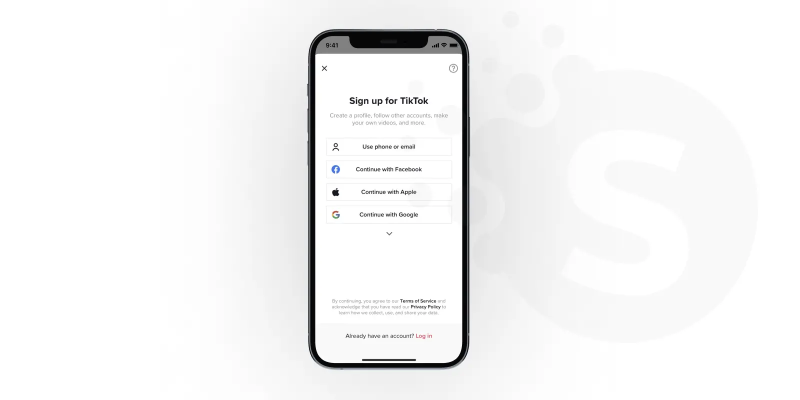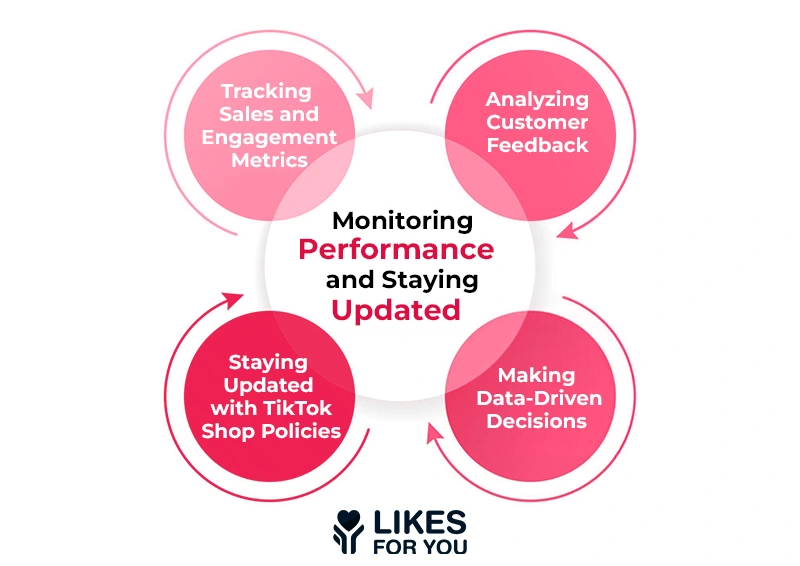
No doubt, business landscapes change with time. TikTok is not any exception. As social media influence continues to dominate in every sector, usage and requirements have changed drastically with time. This guide will give you full insight into how to sell on TikTok Shop in the United States with the major strategies to reach an audience, streamline product listings, and leverage unique features on TikTok to boost sales efforts and connect with potential customers more effectively.
1. Download the TikTok app: You can find it on the App Store or Google Play Store.
2. Sign up: Choose to sign up with your email or phone number.
3. Complete your profile: Fill in your basic information, including:
Name: Choose a name that is easy to remember and relevant to your brand. It can be your business name, your personal name, or a combination of both.
Bio: Write a concise and engaging bio that describes your products or services. Highlight the unique selling points and benefits of your offerings. Use relevant keywords that potential customers might search for.
Profile picture: Use a high-quality image that represents your brand or products. It could be your logo, a product image, or a personal photo that aligns with your brand's aesthetic.
1. Meet eligibility requirements: Ensure you are a US citizen and have a business. If you live outside of the US, check if TikTok Shop is available for your country.
2. Provide necessary documentation: Submit the following documents:
3. Agree to terms and conditions: Read the terms of service and guidelines of TikTok Shop carefully and accept them. The documents explain the terms with seller expectations about payments, product quality standards, and procedures when there is a dispute.
Submit identification documents: Attach a copy of the passport or driver's license from a government-issued ID as proof of identity. Make sure this is clear and readable.
Complete a video selfie verification: Record a short video of yourself for verification purposes. Then, follow the instructions provided by TikTok Shop and make sure your face is clearly visible in that recording.
1. Add a profile picture and cover photo: You should choose images that represent the look of your brand. For the profile picture, you can opt for a clear photograph of your logo or a product image. For your cover photo, you might use a banner with images reflecting your products or services.
2. Write a compelling bio: Describe your products or services and what's special about them in an easy, conversational way, making clear the benefits of your offering. Use keywords that likely exist in the different search terms applied by your TikTok followers.
3. Categorize your products: Group your products together in a manner where the customer can locate easily what he's looking for. Use general, general headings for the categories of your products.
4. Link to your website or social media accounts: Bring traffic to your other sites online and share more about the business. This can be done through linking your website, Instagram, Facebook, or any other social media account.

Analyze TikTok trends: Identify popular hashtags, challenges, and sounds to better understand what resonates with the audience. What is trending, who are some famous creators, and what are some viral videos? Analyzing trends can help you run your TikTok ads properly.
Study consumer behavior: Understand the preferences, needs, and pain points of TikTok users, especially the younger demographic. Research their interests, purchasing habits, and values.
Utilize TikTok's analytics tools: Track the performance of different types of products and content to identify what works best. Analyze data on views, likes, shares, and comments to identify popular categories and trends.
Identify successful TikTok shops: Look for TikTok businesses that have large following and high engagement rates.
Analyze product features and pricing: Examine the products offered by successful shops, paying attention to their features, benefits, and pricing. Identify what makes them popular and competitive.
Identify gaps in the market: Look for opportunities to offer unique or innovative products that are not readily available on TikTok. This could involve finding niche products or offering customized or personalized options.
Stay updated on TikTok trends: Follow relevant hashtags, creators, TikTok videos, and TikTok's official accounts to stay informed about the latest trends.
Create content that aligns with trends: Develop product ideas that can be integrated into popular challenges or trends. For example, if a popular challenge involves using a specific type of product, create a product that fits the theme and can be featured in the challenge.
Remember: When selecting products, prioritize those that are visually appealing and resonate with TikTok's younger demographic. Consider factors such as:
Aesthetic appeal: Ensure your products are visually appealing and align with TikTok's aesthetic. Choose products with eye-catching designs, vibrant colors, and high-quality images.
Relevance: Select products that are relevant to TikTok's audience and their interests. Consider their hobbies, lifestyle, and current events because the TikTok algorithm favors relevance.
Engagement potential: Choose products that can be easily showcased in short-form videos and encourage user interaction. Look for products that are fun, interactive, or educational.
Advantages:
Often offer bulk discounts, which can help you save money on larger orders.
Provide a wider variety of products, including both popular and niche items.
Can establish long-term relationships and potentially negotiate better terms.
Disadvantages:
May require a minimum order quantity, which can be a barrier to entry for smaller businesses.
It can be more time-consuming to work with, as you may need to research and contact multiple suppliers.
Advantages:
Can provide customized products to meet your specific requirements.
Potentially offer better pricing, especially for large orders.
Can establish direct relationships with manufacturers, which can improve communication and quality control.
Disadvantages:
May have longer lead times, especially for custom orders.
Can require more upfront investment, as you may need to purchase a minimum quantity or pay for tooling costs.
Advantages:
No inventory needs to be held, thus reducing upfront costs and storage.
Easier to start up a business as you are putting your focus on marketing and customer care.
Facilitates the selling of multiple products from many suppliers.
Disadvantages:
Limited control over product quality and shipping times since you depend on the dropshipping supplier.
Potentially lower profit margins due to the added dropshipping fees.
When choosing a supplier, consider the following factors:
Product quality: The supplier should provide quality products. Request for samples of the products you want to order or inspect the products to confirm before ordering it.
Pricing: Compare the prices of the different suppliers and see who offers you the best deals. Even with a good supplier, ensure wholesale discounts, minimum order quantities, and shipping costs.
Shipping times: Check how much time the supplier would take to ship out products and how constant this shipping is if you are engaged in dropshipping. It means checking whether or not they can ship in good time to your customers.
Customer service: Test their responsiveness and helpfulness, in particular regarding the addressing of problems or questions. Choose suppliers who have good customer service and are easy to communicate with.
Request product samples: Obtain samples of the intended products for selling to ensure whether the products are of good quality and originality. Inspect the product for defects, material, and workmanship.
Check supplier reviews and ratings: Reviews from other customers can give you a proper idea of the reputation of the supplier and their reliability. They are supposed to share their experience with regard to product quality, customer service, and shipping time needed from the supplier.
Ensure compliance with relevant regulations: Verify whether the sourced products are complying with all the essential regulations regarding safety and quality. It may refer to checking for certificates or certifications.
By carefully selecting and sourcing your products, you can build a successful TikTok Shop that offers high-quality, authentic products that resonate with your target audience.
Performance tracking and analysis, along with incorporating customer feedback in data-informed decision-making, will be vital for the flourishing of your TikTok Shop. Stay updated about policies that define TikTok Shop.
Track your sales volume of your product, revenue, and your average order value. Also, track likes, comments, shares, and saves in your TikTok Shop posts. You should also track the performance of your TikTok Lives in terms of sales. Leverage the built-in analytics tool from TikTok Shop to get a deeper understanding of your shop's performance.
Be attentive to comments and reviews by customers on the products and services you are offering. This allows constructive information on whether your product satisfies a customer or is nonsuitable for particular customers. Immediately respond to inquiries and concerns with good and professional responses, showing that you care about the efficiency of customer service.
Analyze trends, strength points, and weakness points of your TikTok Shop using the data that you collect. You would be well-positioned to make the most informed decisions regarding what to stock and how to market it to customers as well as bettering customer service. Keep on optimizing your TikTok Shop based on your performance analysis. Sometimes tiktok shops need the support of tiktok influencers, and this decision can also be made through a data-driven approach.
Familiarize yourself with the terms of service, the community guidelines, and the policies that govern sellers on TikTok Shop. Those documents outlay the dos and don'ts that govern your TikTok Shop-from things you might not be allowed to do on your TikTok Shop, such as prohibited activities and content guidelines, to payment terms.
Keep yourself updated regarding all new updates of TikTok Shop policies. TikTok Shop may change its policy time to time for new issues or enhancements on the platform. So check frequently for all the new updates of policies to ensure that your TikTok Shop is in accordance with all the changes.
Your TikTok Shop must be in compliance with all applicable laws and regulations. In addition to the policies of TikTok Shop, your TikTok Shop must also comply with applicable laws and regulations of your jurisdiction. These may include consumer protection laws, advertising regulations, and tax laws.
In conclusion, the creation of a selling account on TikTok Shop requires strategic planning from the beginning of your profile to sourcing for products and analyzing your performance while also keeping up with the policies of that application. Know your audience, leverage trends, focus on quality and engagement, and you're guaranteed to jump-start sales and connect your potential customers in this dynamic platform.